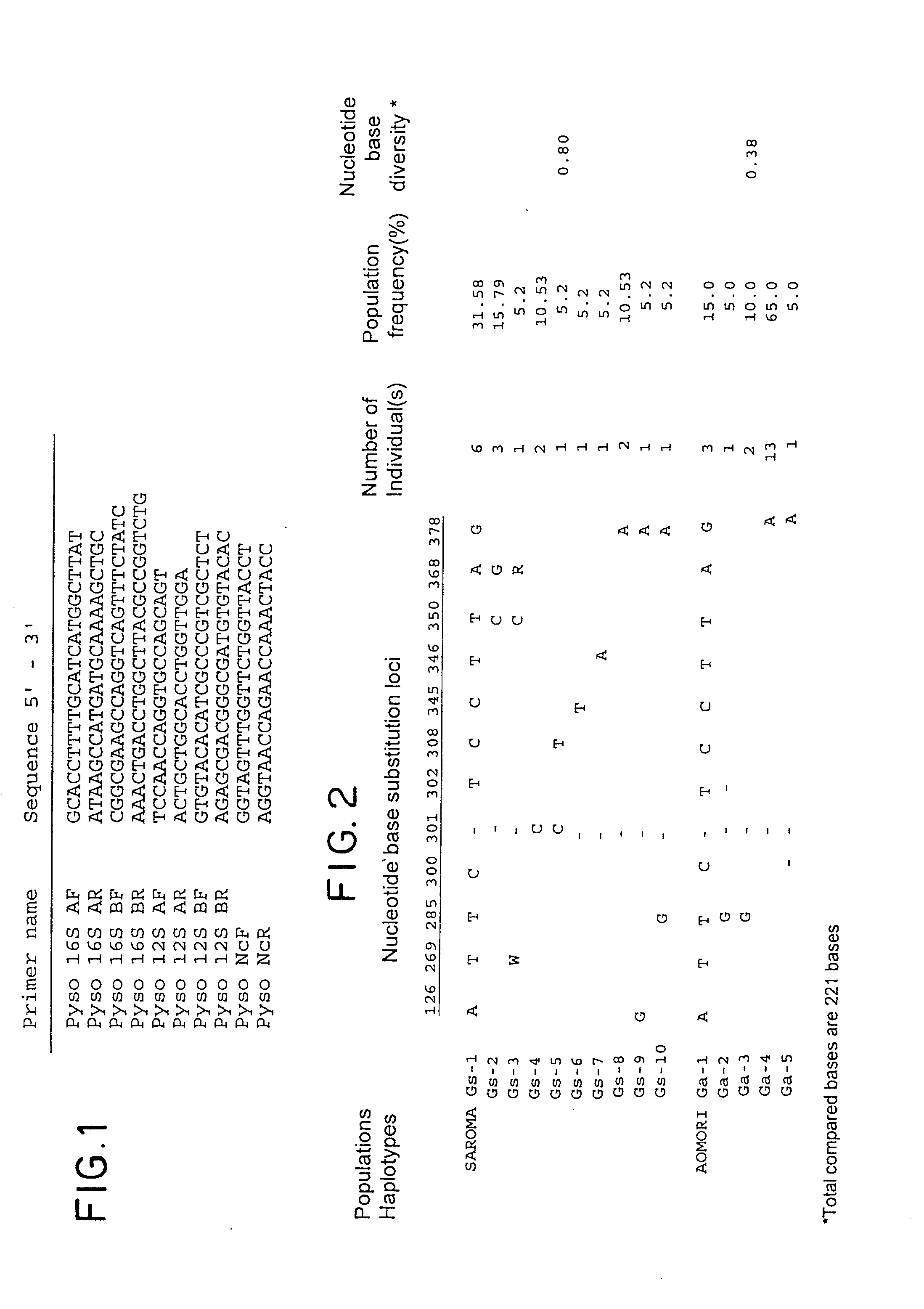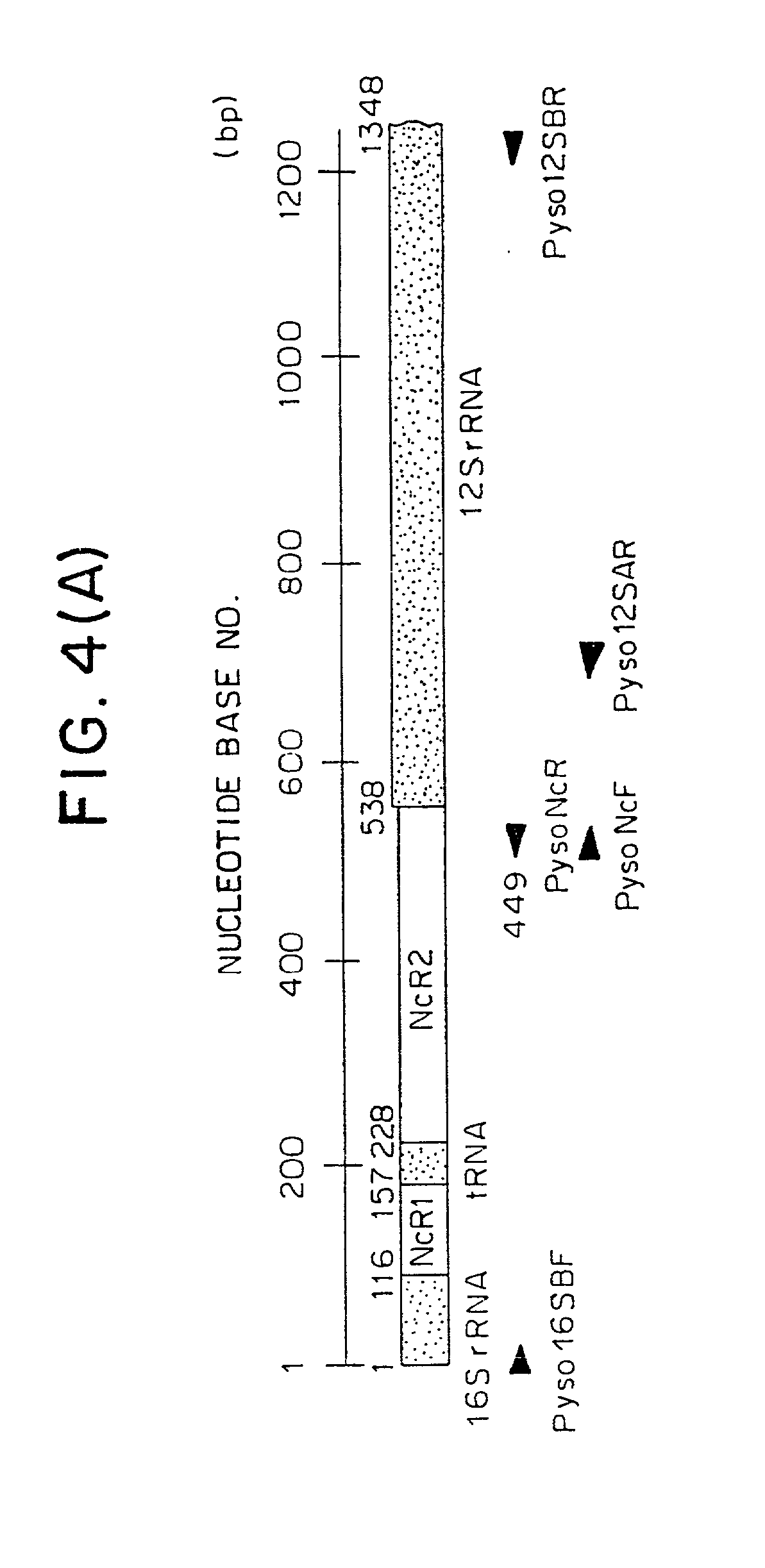Method for analyzing phyletic lineage of scallop
a phyletic lineage and scallop technology, applied in the field of methods for analyzing the phyletic lineage of scallops, can solve the problems of reducing the pool of genes, negative aspects that adversely affect the genetic structure of whole organisms, and mentioning scallops
- Summary
- Abstract
- Description
- Claims
- Application Information
AI Technical Summary
Benefits of technology
Problems solved by technology
Method used
Image
Examples
Embodiment Construction
[0021] As far as mitochondrial DNAs in vertebrates and molluscs are concerned, their complete nucleotide base sequences have been determined in some cases of species (as reported for example from Hoffmann et al., Genetics 131:397-412, 1992 and Hatzoglou et al., Genetics 140:1353-1366, 1995). The vertebrate mitochondrial DNA (mtDNA) is reported to include non-coding regions in the genomic structure thereof, which shows a great diversity of nucleotide bases, i.e. hypervariable base sequence, indicative of certain mutation occurring therein (Wilding et al., J Mol Evol 48:348-359, 1999 and Kurabayashi et al., Mol Biol Evol 17:266-277, 2000). Hence, the non-coding regions have been accepted as a criteria for lineage analysis and phylogenetic studies as well as population genetic studies. Also, the mtDNA is maternally inherited and known to exhibit a high mutation rate in vertebrates.
[0022] With regard to scallops, Sellos et al report that a 5.5 kbp mtDNA segment from a scallop (Pecten ma...
PUM
| Property | Measurement | Unit |
|---|---|---|
| length | aaaaa | aaaaa |
| genomic structure | aaaaa | aaaaa |
| population frequency | aaaaa | aaaaa |
Abstract
Description
Claims
Application Information
 Login to View More
Login to View More - R&D
- Intellectual Property
- Life Sciences
- Materials
- Tech Scout
- Unparalleled Data Quality
- Higher Quality Content
- 60% Fewer Hallucinations
Browse by: Latest US Patents, China's latest patents, Technical Efficacy Thesaurus, Application Domain, Technology Topic, Popular Technical Reports.
© 2025 PatSnap. All rights reserved.Legal|Privacy policy|Modern Slavery Act Transparency Statement|Sitemap|About US| Contact US: help@patsnap.com



